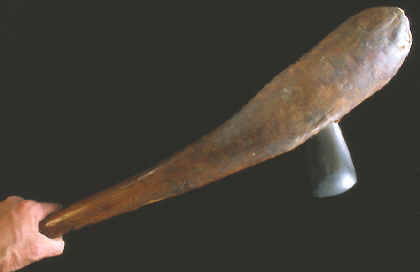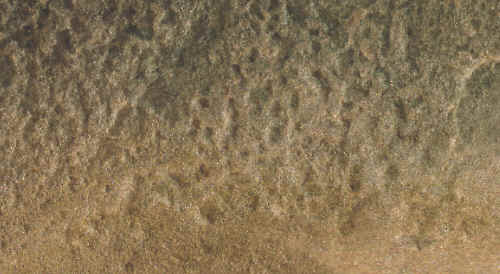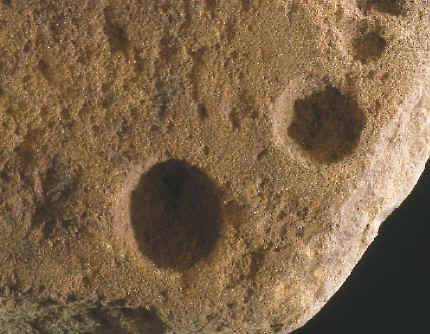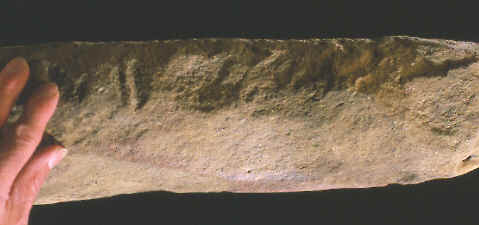|
|
|
Axe grinding stones can be portable like the one described in this article. But many of them are just grooves worn into large rock outcrops. In southeastern Australia on the slopes of Mt. Tuggeranong where large flat slabs of sandstone are exposed there are at least 30 axe grinding grooves worn into the stone. In the Sydney district there are hundreds of grinding grooves. Most of these sites are located near a water source because water was needed as a lubricant in the axe grinding process. A modern equivalent would be a wet-stone coated with a little oil to sharpen a pocket knife blade or water proof sand paper that also uses water as the lubricant. |
|
|
|
|
Axe grinding stones represent some of the largest stone tools that were used by Stone Age peoples around the world. Hampton writes in his book--Culture of Stone, "The largest ground stone tools that are present in the Highlands (New Guinea) are permanently located grinding slabs (select spots on bedrock outcrops and large erratics (stones) and smaller portable but stationary grinding slabs". Another stone tool type that is just as large are mortars that were used to grind various types of grain, nuts and other food stuffs. |
|
|
|
|
The majority of all stone tools that have been found on Stone Age sites around the world are simple tools that were used by people in their everyday life to survive in all kinds of climatic conditions on land and water. They were used to process food, hunt, for defense, war, make clothing, shelters, boats----and in an endless variety of tasks that involved cutting, scraping, drilling, chopping and in the case with axe grinding stones, "grinding". |
|
|
|
|
"REFERENCES"
1912,
"Handbook of American Indians North of Mexico", by Fredrick Webb
Hodge, pp.6, 7. |
|



